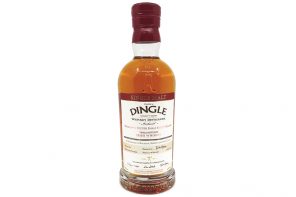It’s all about the face.
In this age of “selfies,” social media, and a desire to remain “relevant” in the workplace, appearance is everything. And millennials — those born between 1982 and 2002 — seem to be a primary driving force behind the upwards trend in surgical, minimally invasive and nonsurgical cosmetic procedures, with nose reshaping (rhinoplasty) and eyelid surgery (blepharoplasty) among the top five requests. Total cosmetic procedures in the United States number nearly 18 million, according to 2018 statistics from the American Society of Plastic Surgeons
From cheek and chin implants to neck lifts, facelifts and procedures to make the eyes look less tired, more and more people, even baby boomers who want to control the aging process and men, yes, men, are turning to facial enhancements as a self-confidence booster.
But the search for beauty can prove elusive as evidenced by a concomitant rise in requests for facial revisions — procedures to correct “botched” surgeries or address what may be patients’ failed expectations. The American Academy of Facial Plastic and Reconstructive Surgery indicates some of its members performed nearly twice as many revision surgeries in 2018 as in 2017 — an increase attributed, in part, to a growing number of nonmedical staff, “medical spa” personnel and inexperienced physicians attempting to perform cosmetic procedures.
For the patient, revision surgeries can prove much more painful than the original procedure with longer recovery times. For the surgeon, “fixing” already scarred tissue, which has reduced vascularity, is technically challenging — and riskier. In essence, revision can turn into reconstructive plastic surgery.
On the road to perfection
Pathways to achieving that “right look” are many — and perhaps a bit treacherous at times. Even if a cosmetic procedure is highly successful, a patient might express dissatisfaction with the overall result, because he or she never entered the process with clear expectations. Prior understanding and consultation with a plastic surgeon are essential.
Oftentimes, the most appropriate procedures are dependent on a patient’s age. For example:
• Rhinoplasty can help younger patients achieve better facial balance. The surgeon realigns underlying bone and cartilage to change the size, shape or projection of nose.
• Neck lifts smooth an aging neck by removing extra fat and repositioning sagging muscles and tissue.
• A facelift may be an option after age 40 when cheek volumes decrease, the neck sags, brows become heavier and skin wrinkles deepen. Through incisions made just behind the hairline near the ears, the surgeon repositions deeper tissues beneath the skin and removes excess skin to eliminate jowls and sagging and restore facial contours.
• Blepharoplasty eliminates excess skin and fat from the upper eyelid, the lower eyelid or both areas to reduce puffiness, which begins developing after age 30. The procedure is sometimes performed with a browlift to change a person’s tired or angry appearance
• Lip augmentation, often performed with an injectable dermal filler composed of natural-like substances, gives the lips a plumper appearance.
The risks
Even in the hands of experienced surgeons, cosmetic procedures, including nonsurgical approaches such as injection of dermal fillers or BOTOX, pose risks. Scarring, infection, allergic reactions, blood clotting or body fluid accumulating painfully under the skin, skin necrosis and damage to nerves that control facial muscles are potential complications.
It is important to remember, patients heal differently in response to the “injuries” incurred in any surgical procedure, and unhealthy lifestyles can get in the way of a procedure’s success. Smoking, for example, compromises the healing process by shrinking blood vessels. Surgeons depend on a sufficient blood supply since their efforts to improve appearance involve the reshaping and movement of tissue from one location to another.
When bad surgery happens
But these risks pale in comparison to poorly performed procedures that leave patients with tightly stretched, scarred skin from a facelift; a blackening, necrotic nasal tip following rhinoplasty; lumpy, oversized lips; an asymmetrical face; or eyelid surgery that places the lower lid in the wrong position or prevents a patient from completely closing the eyes. Worse, cosmetic procedures gone wrong may lead to chronic pain, permanent disfigurement and scarring and, occasionally, even death.
And, the risks don’t go away with nonsurgical approaches. Improperly administered injections of botulism during a blepharoplasty, for example, can cause temporary — and sometimes permanent — blindness, while inappropriate application of silicone fillers may result in formation of hard, gravelly lumps under the skin or allow the silicone to migrate and poison other organs in the body. More risky yet are injectables performed at parties by dubiously licensed people.
Takeaways
To avoid becoming a star on the TV program “Botched,” find a plastic surgeon certified by The American Board of Plastic Surgery with extensive education and training in harmonizing facial aesthetics with function.
Even better, avoid — or at least delay — a need for cosmetic surgery by improving lifestyle. Wear sunscreen, eat a healthy diet, drop the excess weight, exercise, get a sufficient amount of sleep, reduce stress and, if you smoke, stop — now, because beauty, indeed, is truly skin deep.
Stephen M. Warren, M.D. is a board-certified plastic surgeon who specializes in facial rejuvenation. For more, visit stephenwarrenmd.com.




